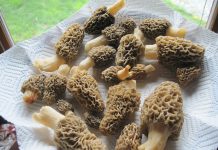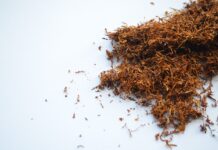Just think about it, you pay for coverage for your house, cars and equipment because without it you would be in a pickle if something were to go wrong. You make the effort to protect your investments and equipment that help you make money. Why not cover your soil? Why not protect the very ground that allows your crops to grow, allows your seeds to germinate?
Keeping your ground covered with cover crops can be the best thing for it. There are many benefits to planting cover crops, such as improved soil quality, decreased soil erosion and runoff, decreased input costs, increased pollination, increased rain infiltration rate, reduced soil compaction, and livestock grazing.
Cover crops
Planting cover crops can improve your soil quality due to the immense amounts of organic matter being added back to the subsurface of the soil. Soil quality is also increased by creating habitat for microorganisms like the fungi that can help with soil quality and provide channels for nutrients to descend farther down into the subsoil.
Along with soil quality improvements cover crops also greatly reduce soil erosion. Cover crops provide a much-needed barrier for the rain to hit before it hits the soil, allowing for a softer impact for the water to be absorbed rather than hitting the ground directly leading to soil erosion. Think of cover crops like sunscreen. You apply sunscreen to your body, not to fully stop the sun rays from hitting your skin, but to reduce the impact on your skin.
Cover crops reduce soil compaction when their deep tap roots allow more nutrients to get to a subsurface level. This allows previously compacted soil to start breaking up, allowing for better roots systems in your crop fields, which in turn will allow for a better crop.
Cover crops also can be managed for their nitrogen contribution to the soil, allowing for fewer applications, reducing the input cost of the crop, saving money. Planting flowering cover crops such as buckwheat, cowpeas, cabbages and so on, will help pollinators which we all need to grow a healthy, high-yielding crop.
Grazing on cover crops
Grazing livestock on cover crops has three big benefits: cost savings, time-saving and soil health improvements.
One of the major costs for any livestock producer is feed. Leaving livestock out to graze provides considerable savings by reducing the need for feed. By growing a cover crop on row crop acres, not only do feed costs decrease, but the cost of labor to make and feed the feed also decreases as the livestock does the work. By growing cover crops with livestock in mind, grazing time can be extended beyond what a regular pasture can provide. This can usually mean an extra 3-4 weeks or more in the fall or spring when pastures are inactive.
Not a single person wakes up in the morning and thinks “Yes, I get to go clean out the manure from barn today.” Although satisfying when it is done, no one likes doing it. Livestock leave manure in the same place they graze, keeping most of the manure out of the barns. Rotational grazing helps spread out the manure left in the pasture more evenly, adding even more organic matter back to the soil.
One way to plant cover crops is to use a no-till seed drill, some county soil and water conservation districts have no-till drills to rent out, offsetting the cost to purchase one. If you live or own property in Portage County Ohio and are interested in using one of our two no-till seed drills, please contact our office.













